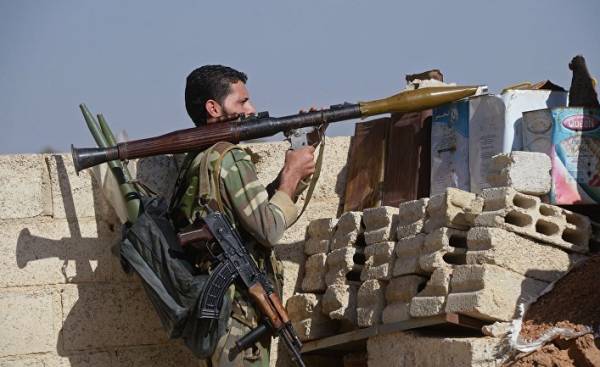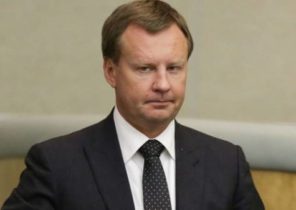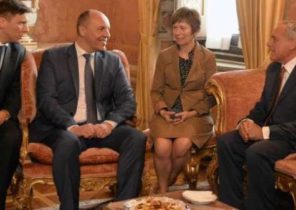
According to sources in the Syrian armed opposition, March 20, the second phase of fighting on the outskirts of Damascus. At the same time, clashes between militants of the “Tahrir al-sham” and subordinated to this organization groups on the one hand, and the Syrian army on the other.
During these clashes, on 23 March in Geneva, started a fifth round of indirect talks between the government and the opposition. However, there is only a slim chance of achieving any breakthrough in the negotiations because of the reluctance of the parties to the conflict to be flexible, as well as the ongoing fierce fighting in Damascus.
This is not the first time in the outskirts of Damascus between the parties occur bloody conflict. Previously, on 17 Jul 2012 under the leadership of the Free Syrian army had carried out military operation called “Volcano in Damascus — earthquake in Syria”, however, it is now a big toll on all parties to the conflict.
Fighting in Damascus began after the violations of the armistice agreement, which was concluded between the opposition and the regime at the conference in Astana with the assistance of interested players. The United States, which has created in Syria, its military bases to strengthen military presence on Syrian territory and the protection of the Kurdish state, has not played a significant role.
The battle of Damascus has begun:
• after, according to a post on the website I24news Israeli side, defense Minister of Israel Avigdor Lieberman has made threats that when at dawn on 20 March, Israeli warplanes will launch a new attack on Syrian territory, their goal will be also the air defense system of Syria, located in the mountains kalamun.
• after between Russia and Iran began to appear differences regarding the fate of the Syrian state and its role in the future. In particular, the Russian leadership is working to submit a draft of the new Constitution, and making serious attempts to restructure the Syrian army on a new basis. Meanwhile, Iran believes the current Syrian regime is a natural extension of its influence in the middle East.
• after the return of US forces to the region. The purpose of their return to put an end to the intervention of Turkey in the region, through blockade of its armed forces in Syria. But even before the U.S. stopped the Turkish advance in Northern Syria. In addition, according to the U.S. representative to the United Nations, us leadership thus emphasizes the need for the expulsion of Iran from Syria.
• after the Syrian armed opposition confidently announced his intention to take part in the talks in Astana and Geneva. She has certain levers of pressure, which can impose its own terms at the negotiating table.
The goals of the conflicting parties intersect, however, the outcome will depend on how events will unfold, especially for the Syrian army. It’s vital to defend the capital, as the defeat in Damascus will mean the loss of the regime’s most important city in Syria and will serve as the point of the countdown of its destruction in the fight.
Anyway, the battle in Damascus is a kind of message to both conflicting parties. Fiercer than the battles, the better the position of the opposition, and especially behind her forces at the talks in Astana and Geneva. This message is particularly hard for the Syrian regime, which did not hesitate to accept help from Hezbollah in the form of modern weapons and missiles, “surprising” thus Israel in response to his recent raids on Syrian targets.
Finally, this battle will not be easy for either one of the parties. Everyone is waiting for the results in order to strengthen its bargaining position, and for many these results will be crucial. This time the fight will be fierce, and maybe the parties to use unconventional weapons.
However, regardless of how events will unfold, we have to answer two questions: if not for the battle began in Damascus to end the crisis? Or its purpose is to restore balance in the region and in the international arena?







